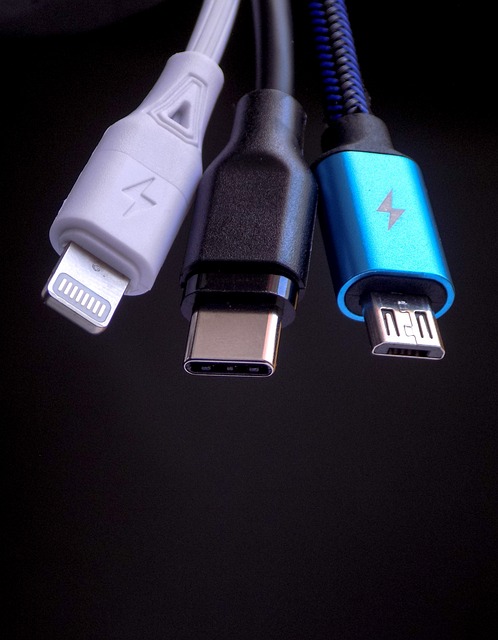Adopting USB-C Power Delivery
Special contribution by:
Stephane Rosa
Supplier Development Manager
Future Electronics
In this article:
Power delivery standards have been a topic of discussion for many years. While innovative ideas have come and gone, some have survived longer than others, proving themselves beneficial for designers and preferred by users.
In this post, we’ll cover the benefits of adopting USB-C power delivery. We’ll discuss the global trends that are driving the adoption of USB-C, and how it can simplify charging routines for users. We’ll also explore the advantages of USB-C for designers, and what you need to consider when designing with USB-C Power Delivery in mind.
Why Adopt USB-C Power Delivery
USB-C connectors provide several benefits for consumers and designers alike. Its reversible design brings ease of use for consumers and its slim form reduces footprint for engineers, opening more possibilities for slick design. But that’s not the end of it… USB-C boasts more pins than its predecessor USB-A. This allows increased power delivery capabilities as we’ve seen with newer fast and ultra-fast chargers, as well as better data transfer speed and video bandwidth.
However, while consumer protocols are driving the adoption of the market, the case for USB-C brings in unique arguments to its implementation. It’s not only user convenience or global legislations that drive the standardization of USB-C, but, as we’ll cover ahead, USB-C is becoming a staple in B2B solutions like data logging, control systems and others as well.
In addition, USB-C’s characteristics allow for versatile design, providing not only an input for power delivery, but also for video and audio transmission, as well as data transfer capabilities. This reduces the number of inputs needed on the end products, again, opening a world of possibilities for design.
Global trends
Global trends are leaning toward USB-C as a widely used standard. While most mobile phones, newer computers and gaming devices among other technologies have already adopted USB-C as their choice for power delivery, global legislation will soon make it official.

Currently, the EU has announced parliament approval to implement a common charger for all mobile devices with up to 100W power delivery. The decision was made to reduce e-waste and promote sustainable decision-making for consumers.
As you may infer, the agreed format for the common charger is USB-C thanks to its proven benefits and current widespread implementation.
The law will come into fruition for phones, tablets and earbuds by the end of 2024, and for laptops in spring 2026.
While there was word of Apple being reluctant to go with this legislation, latest reports suggest the company will comply with the mandate in the EU. There is no news yet of a global implementation for the company, and while it seems likely, we’ll remain on the lookout and update you accordingly through our channels.
So far, this legislation has been announced in and for the EU only, but it will be interesting to follow developments closely as other countries could start following the lead of this region.
Benefits for users and designers: One port to charge them all
With a standardized and versatile format, consumers will no longer need to purchase or carry different chargers for every device. This will result in better user experiences as well as a positive impact for sustainability.
For OEMs belonging to other market segments such as industrial and transportation, it is a smart choice to produce equipment and tools including an interface based on the same “consumer” protocol, to allow connectivity to devices carried by a large number of people (smartphones, tablets, earphones…). This is a strong argument to start considering USB-C as a protocol to be used in B2B type of applications
- Due to its versatility, USB-C has become the preferred communication interface in embedded systems.
As we’ve covered earlier, USB-C’s capacity for data transfer up to 10Gbit/s as in USB3.1 specification, video output, and power delivery (among other capabilities) eliminated the need for extra cables, resulting in decluttered design and opening possibilities for cleaner end-products. Thus, becoming attractive for both consumers and designers.
- USB Type-C connector is reversible and user-friendly.
The reversible format of USB-C eliminates the infamous hassle that was connecting its predecessors, where users found themselves breaking the barriers of probability and statistics, needing three or more attempts to plug a device that only presented 50% chance of accuracy.
- Speed and durability
Thanks to its added pins, data and power can travel faster through USB-C than its predecessors. With a capacity of up to 100W, fast and ultra-fast chargers are widely available, in a big part, thanks to this technology. In addition, its durable design doesn’t only achieve increased lifespans than its predecessors, but also brings possibilities for water and dustproof end-products.
- USB-PD protocol enables the activation of alternate modes (AM) to carry proprietary signals such as DisplayPort, HDMI, and Thunderbolt over USB.
USB PD protocol carries out USB Type-C authentication, ensuring brand protection, secure connectivity, and safe charging of recognized devices.
USB-C PD is not only a groundbreaking innovation but a new standard. For this reason, on March 2023, we featured USB-C PD solutions in our monthly Future Picks edition, highlighting STMicroelectronics quality products to achieve superior performance and reliability on your designs.
Considerations for Designing a USB-C Board
By: Stephane Rosa
- To achieve USB-IF (USB Implementers Forum) certification it is mandatory to support at least the following functions
- Cable attach and detach detection
- As a USB Type-C® cable plug can be inserted in the receptacle in either orientation, it is mandatory to first detect the orientation, and in case a cable twist detection
- USB2.0 connection
- The 24-pin USB Type-C® connector includes:
- Symmetric connections: – USB2.0 differential pairs (D+/D-) – power pins: VBUS/GND
- Asymmetric connections – two sets of TX/RX signal paths which support USB3.1 data speed – configuration channels (CC lines) which handle discovery, configuration and management of USB Type-C® Power Delivery features – two side-band use signals (SBU lines) for analog audio modes or alternate modes.
- The power negotiation protocol can set the current and voltage profile that the provider of power will give to the power consumer. USB PD allows a nominal voltage from 5V to 20V and a max current of 5A. In Source mode over the VBUS, in Sink mode from the VBUS
- Power and data transfers are no longer unidirectional.
- In Source mode:
- The product charging another system must monitor and control the electrical current.
- There can be no current flowing once a cable is disconnected. There must be a discharge path redirecting current to ground
- Power role and USB data role can be defined and changed from sink to source and device-to-host and vice versa- PRS Power Role Swap and DRS Data Role Swap
- Pull-up and Pull-down resistors are used to detect orientation and connection
- USB Type-C® supports all prior protocols from USB2.0 onward, including the driver stack and power capability
- For more detailed information, download AN5225 from STMicroelectronics website
USB-C power delivery is a versatile and efficient technology that offers many benefits for both consumers and designers of electronic devices. From simplifying your charging routine to enabling new possibilities in embedded systems, USB-C power delivery is a trend that is here to stay. While there may be some challenges in terms of compatibility and product quality, these can be overcome with careful research and investment in certified products. So, if you’re looking for a way to streamline your electronic devices and enjoy faster, safer charging, USB-C power delivery is worth considering.






